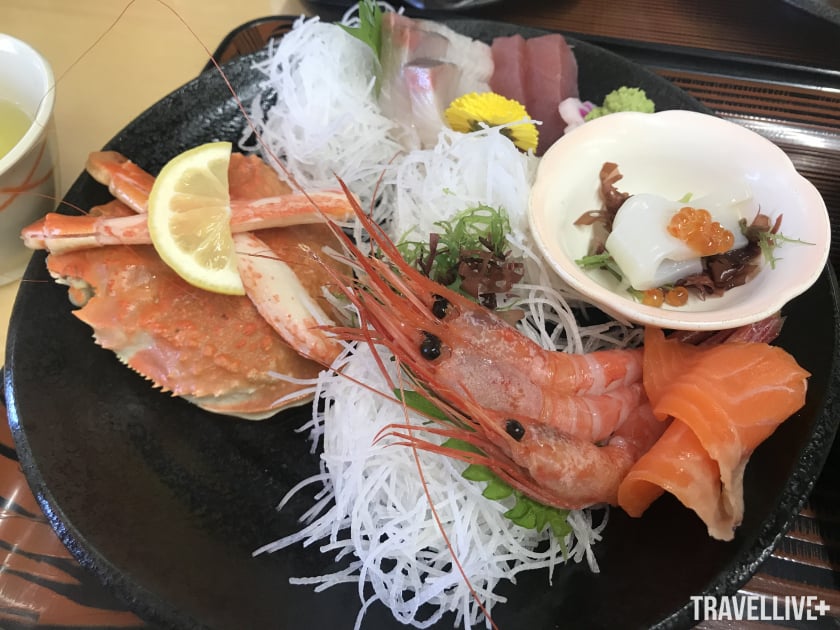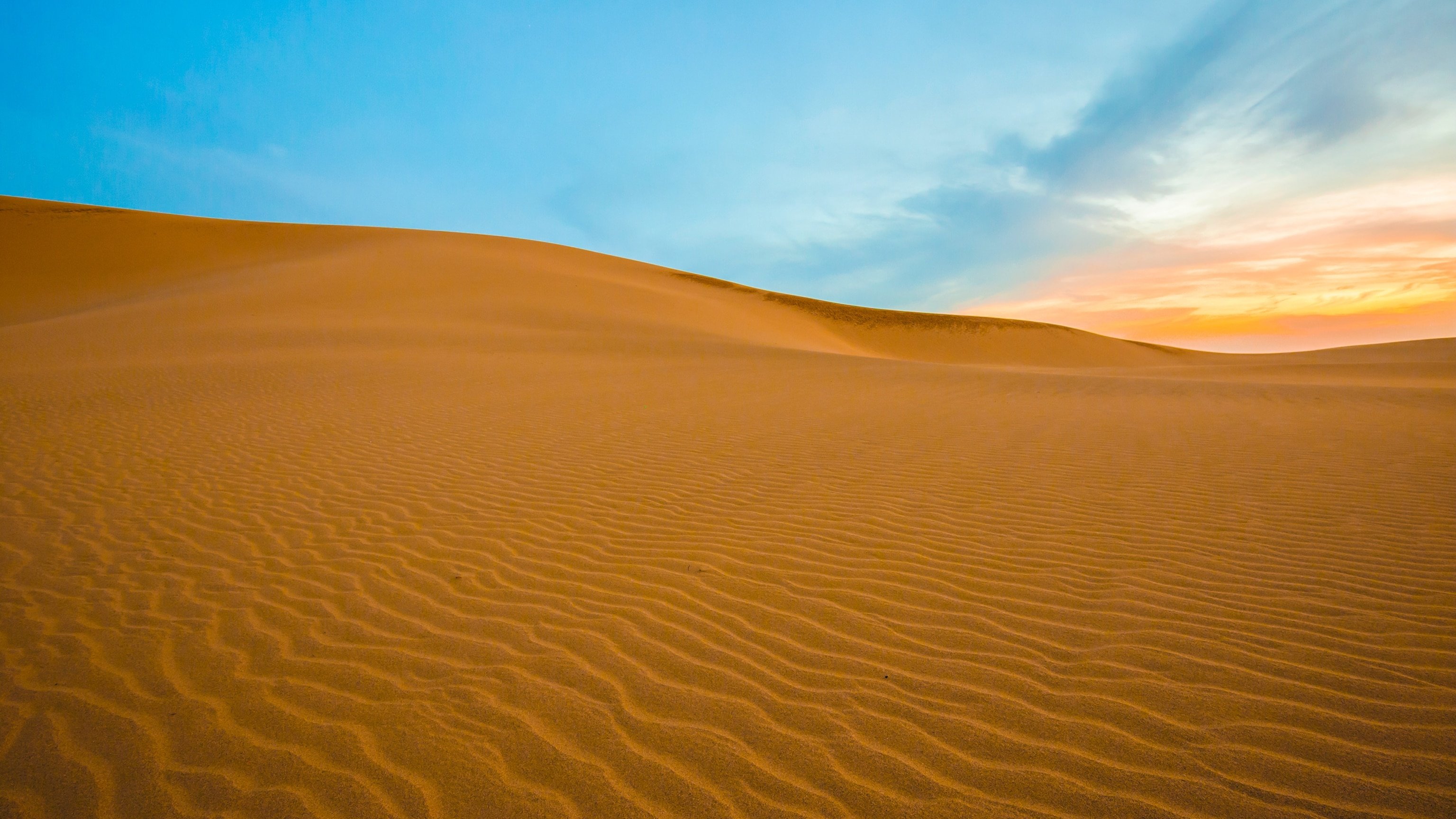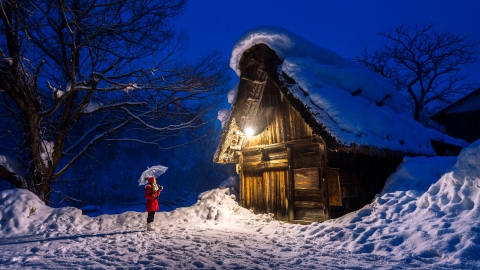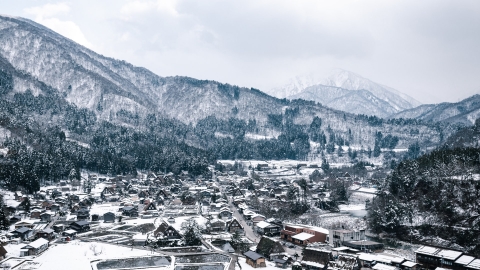A giant natural sand dune located on the coast of the Sea of Japan, the Tottori Sand Dunes are about 131 hectares wide, stretching 16 km east-west and 2.4 km north-south. The difference between the highest and lowest points of the sand dunes is up to 90 m.
The sand dunes are located along the national highway, only 20 minutes by bus or car from the center of Tottori city, very convenient for tourists. If you want to explore on your own, you can take the Sakyu bus or Kirin-Jishi Loop Bus from Tottori Station and get off at Tottori Sakyu.
Masterpiece of nature
According to research documents, the sand dunes were formed over a period of about 100,000 years when sand flowing from the Chugoku Mountains down the Sendai River was blown ashore by strong winds from the sea.
Containing many important scientific values, Tottori Sand Dunes were recognized as a national natural treasure of Japan in 1955 and became a national park in 1963.

Tottori Sand Dunes - The only miniature desert in Japan
What makes the Tottori Sand Dunes unique are the natural creations on the sand that change with each season and weather, with three typical phenomena: fumon (ripples), sachu (sand pillars), and saren (sand curtains). In March, the windy season, the sand dunes always change height, creating eye-catching ripples on the sand when the wind blows at a speed of 5-6 m/s. Sometimes, strong winds blow sand dust, making the whole space hazy like in the clouds.

Fumon (ripple) phenomenon in Tottori sand dunes
On days of heavy rain and strong winds, the sand dunes transform into unique sand dunes with a phenomenon of raised sand grains resembling the surface of rocks. Wind blowing from the sea carries away the surface sand, and rain shapes the sand mounds under the small rocks into natural works of art. The sand curtain phenomenon occurs when the top of the dune collapses after reaching its maximum stable angle.
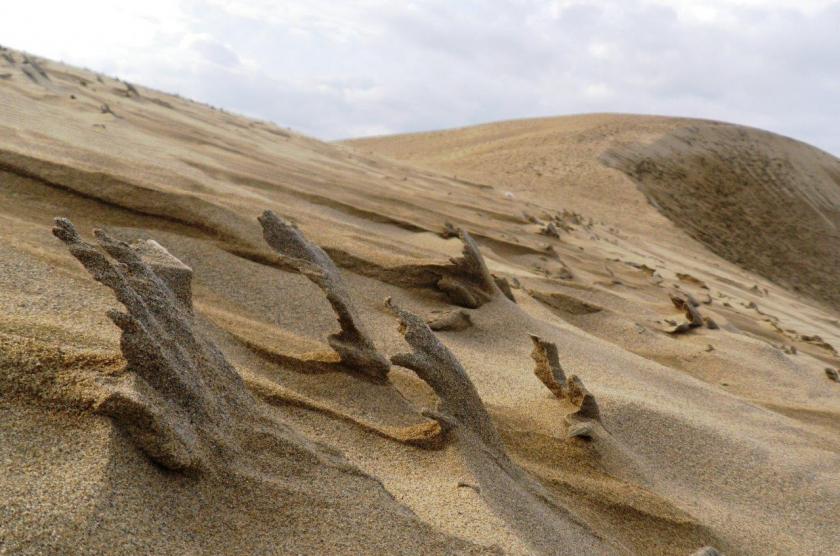
Sachu phenomenon (sand pillar)
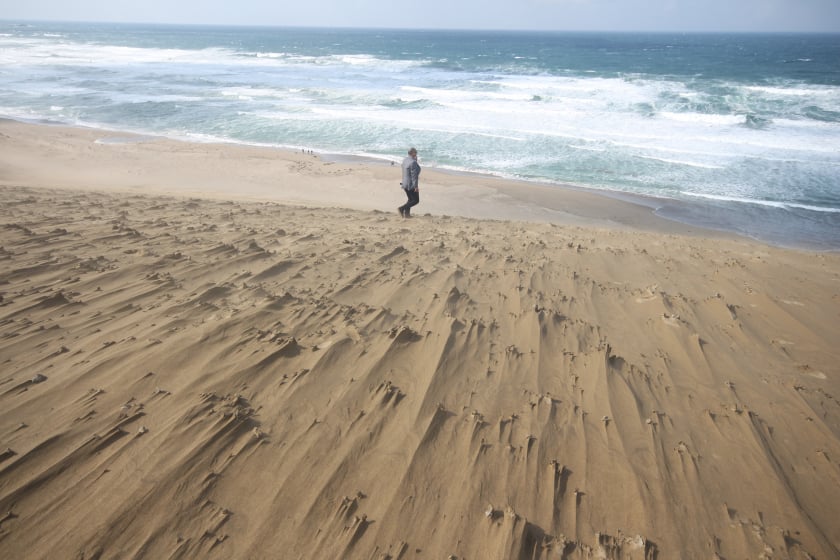
Wind and rain shape sand pillars into works of art.
In autumn, the vegetation blooms, covering the sand dunes in purple. In winter, the sand dunes are covered in the pure white of snow. Summer is the time that attracts many tourists to Sakyu beach because of the clear sea water and gentle coastline. Many entertainment services for tourists at the sand dunes such as: sand sliding, paragliding, desert mountain biking, etc. In June, visitors can experience harvesting onions grown on the sand dunes, making Tottori's specialty spice, Sakyu pickled onions.

Coming to the sand dunes, visitors can experience services such as paragliding.
In addition, on summer evenings, you can see the Gyoka lights shining from squid fishing boats like fireflies flying on the sea surface. Besides, leisurely walking on the sand dunes on the back of camels or watching the beautiful sunset when the sun gradually sinks into the sea of Japan from the Tottori sand dunes is also an extremely interesting experience.
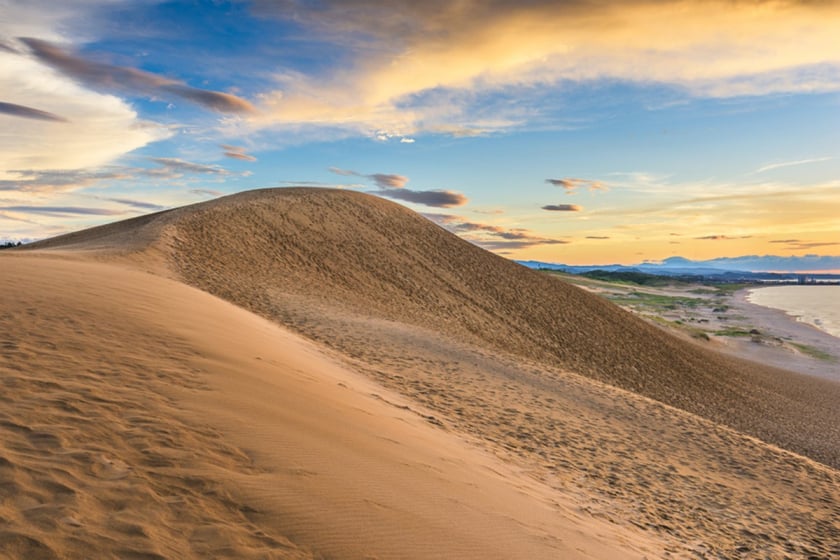
Watching the sunset...
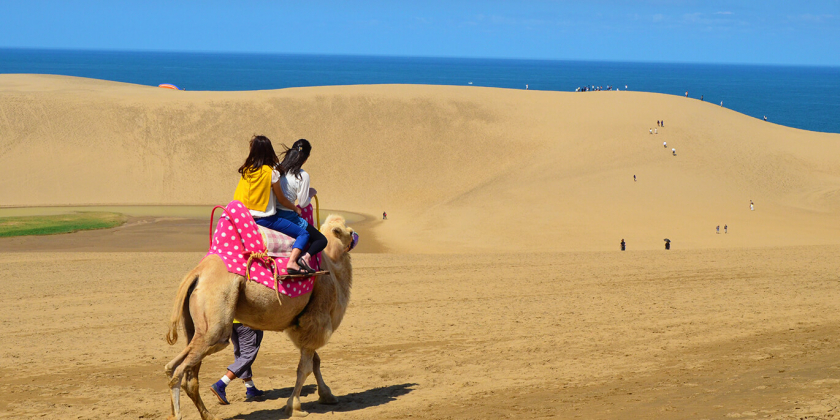
...or leisurely strolling through the sand dunes on camel back is an interesting experience not to be missed.
Many interesting destinations
Besides exploring the sand dunes, visitors to Tottori can learn more about the history and origin of the sand dunes at the Visitor Information Center; or admire the world's leading sand sculptures at the Tottori Sand Art Museum - the world's first museum to display sculptures made from sand.
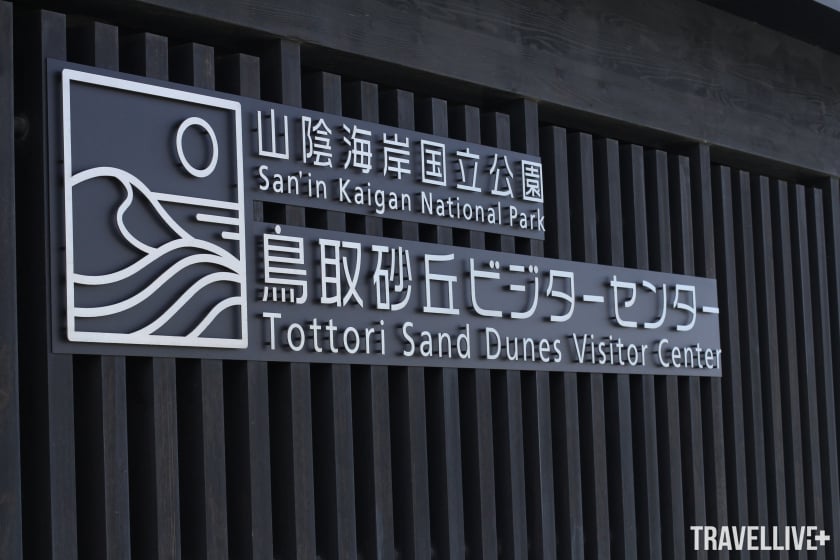
Tottori Sand Dunes Information Center
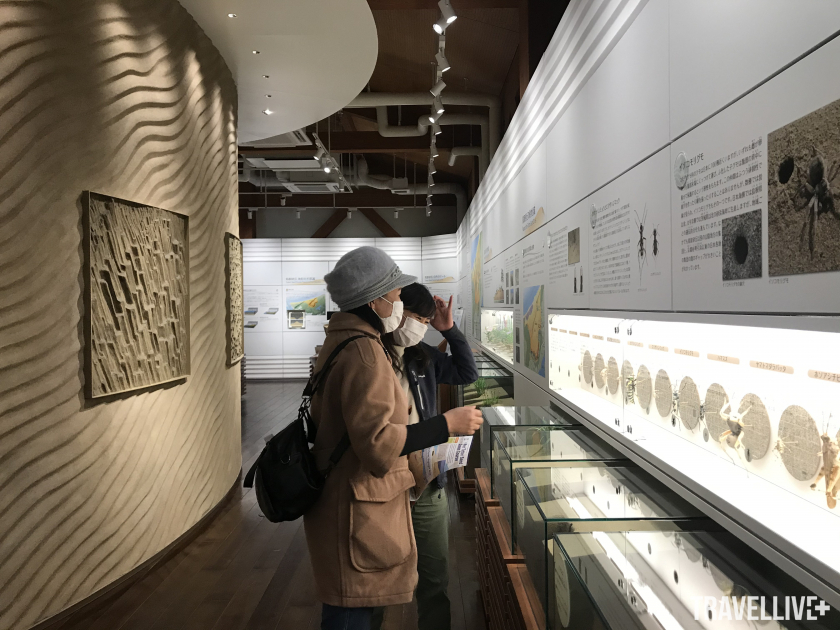
Visitors learn more about the sand dunes at the Information Center.
Built in 2006, the Tottori Sand Art Museum not only displays works created from the sand of the Tottori Sand Dunes, but also conveys to viewers the timeless charm of a gift bestowed by nature.
Made from sand that has been hardened by water, the sculptures and sand statues displayed here will fascinate visitors with their grandeur, sophistication and liveliness. The museum is usually open to visitors from mid-April to early January of the following year. This year, the museum is expected to welcome visitors from July to January 2024.
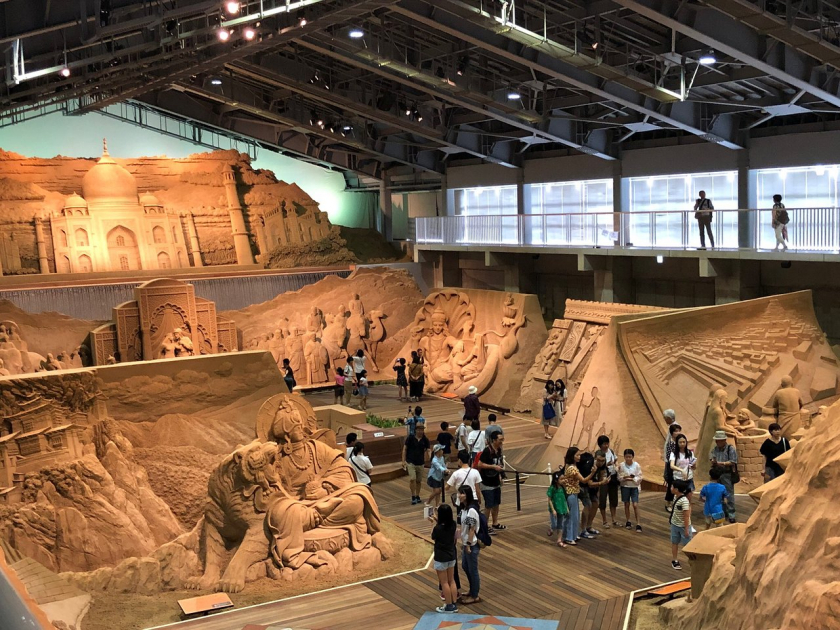
The Tottori Sand Art Museum is a unique and fascinating facility that houses some of the most iconic works of sand sculpture in the world.


In addition to the sand dunes, Tottori City has many interesting things to explore throughout the four seasons. Walking around this land, visitors can choose from many different destinations such as immersing themselves in the world of flowers at Tottori Hanakairo Park, admiring spring cherry blossoms at Tottori Castle ruins, visiting the only pear museum in Japan, exploring the Gosho Aoyama Manga Factory, or experiencing Onsen hot springs and enjoying Tottori's famous snow crab.
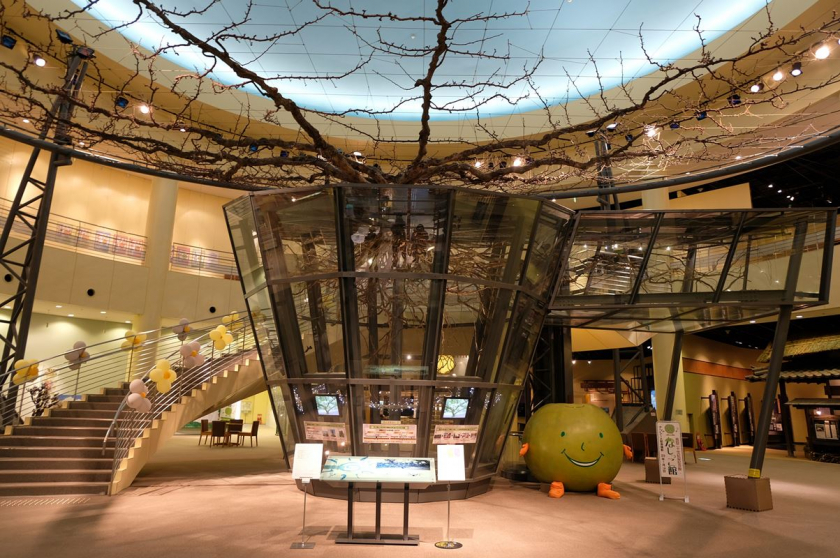
Japan's only pear-themed museum, “Tottori Nijisseiki Nashi Kinen Kan”
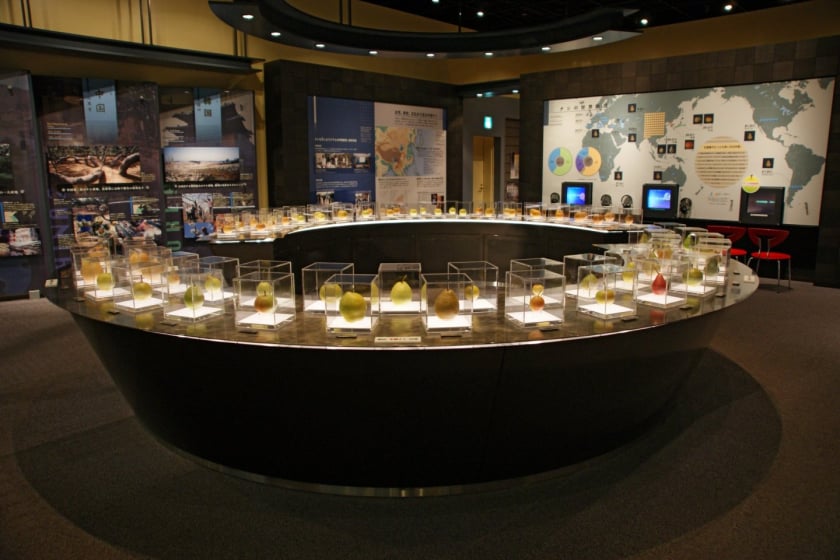
Pears and People of the World, a display of pears from around the world, features 70 pear models in all.
